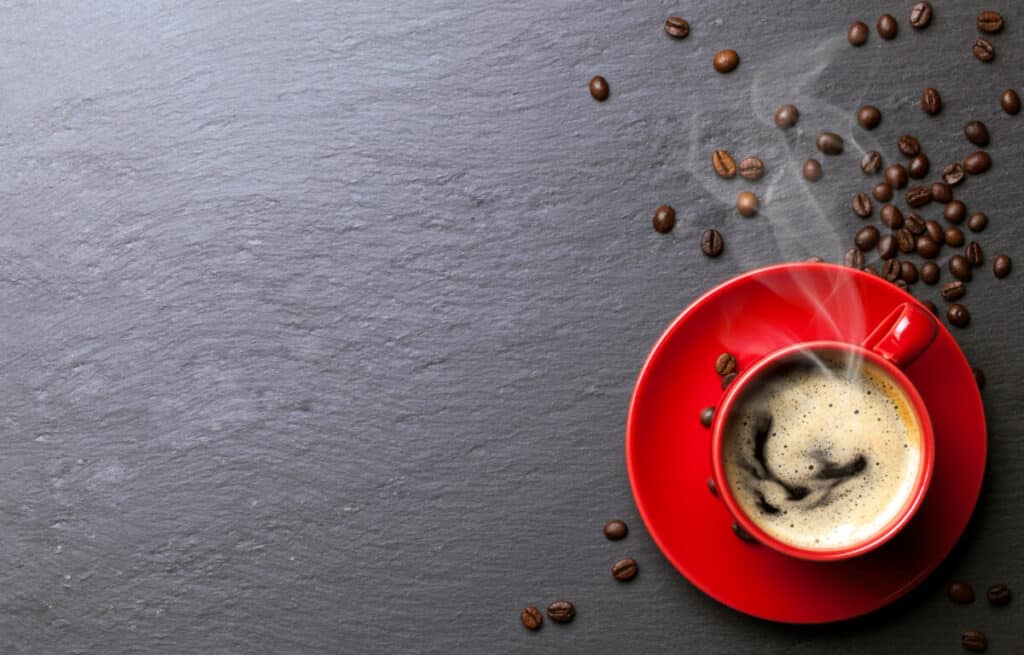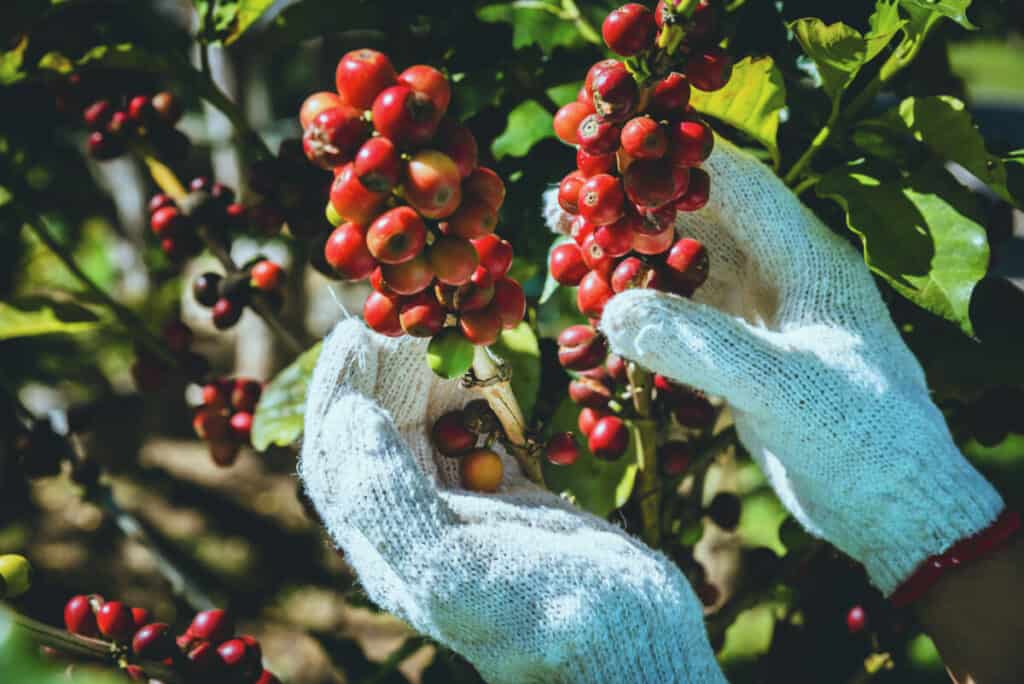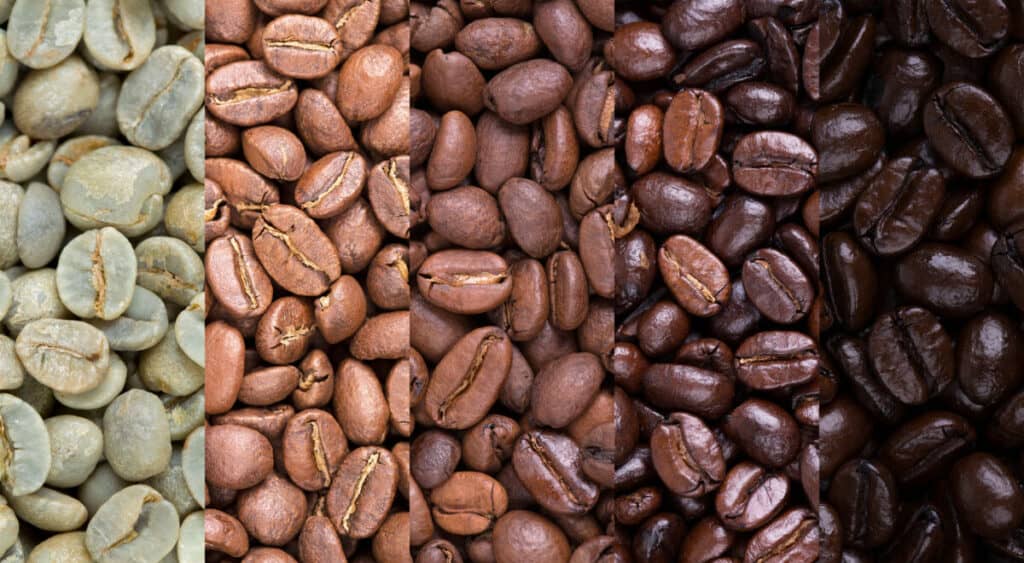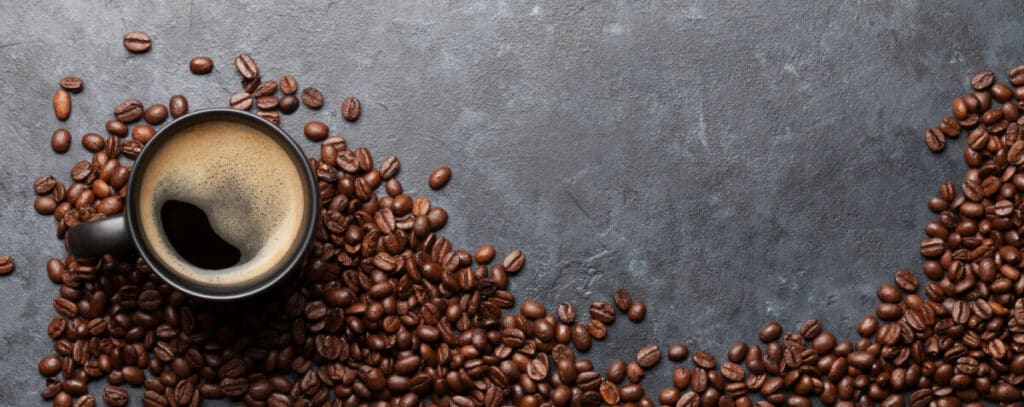
A lot of talk surrounding food is the discussion of ingredients added in processing. Words like “impurities,” “additives,” and “chemicals” get thrown around as scare tactics and to get clicks. Misinformation is everywhere and no one knows the truth, but does any of this apply to everyone’s favorite morning fix?
Coffee is naturally made up of multiple chemical compounds, so it is not a pure chemical substance, which is a single uncombined element, like carbon, or a single compound, like sugar. It is a pure substance in that it doesn’t have any additives or contaminants.
The following information covers the actual definition of a pure substance, what chemicals are naturally occurring in coffee, and the entire coffee-making process so the purity debate surrounding coffee can be settled once and for all.
What is a Pure Substance?
Defining something as a “pure substance” can mean two different things: the meaning used by chemists and in chemistry, or the definition used colloquially by non-chemists in everyday settings.
The chemistry definition of a “pure substance” is matter with a composition that is always constant and characteristic properties that are always consistent. So, it’s either a single, homogenous element or a single compound.
All elements by themselves are pure substances. Some commonly known element examples include:
- Iron (Fe)
- Helium (He)
- Tin (Sn)
- Sulfur (S)
- Gold (Ag)
- Aluminum (Al)
- Lead (Pb)
- Oxygen (O)
- Chlorine (Cl)
- Copper (Cu)
Some matter is made up of a single compound. Some commonly known examples are:
- Water (H2O)
- Sugar (C12H22O11)
- Table salt (NaCl)
- Baking soda (NaCHO3)
A good rule to follow is that if you can easily write the chemical formula for something, it is a pure substance.
The colloquial definition of a “pure substance” is something that doesn’t contain any contaminants or impurities. Some examples include:
- Olive oil
- Milk
- Alcohol
- Saline solution
- Metal alloys like brass or steel
- Honey
The Chemistry of Coffee

Coffee has a bunch of naturally occurring chemical compounds that create the characteristics people enjoy about it, like its taste, scent, and high caffeine content. Some are naturally occurring in the coffee bean, and some occur in the chemical reactions that come about during the roasting and brewing processes.
In total, there have been over 1,000 chemical compounds identified that are connected to coffee in some way, from the coffee bean itself to the chemical compounds that cause coffee’s aroma.
They can be divided into a couple of different groups: carbohydrates, alkaloids, lipids, acids, and volatile compounds.
Carbohydrates make up around 60% of coffee’s chemical composition. They consist mainly of various poly and monosaccharides that are essential to the cell structure of the coffee bean.
The two main types of alkaloids talked about in relation to coffee are caffeine and trigonelline. Caffeine is a natural stimulant and is also the source of coffee’s bitter taste, which is why highly caffeinated coffee is extremely bitter.
Trigonelline is an anti-inflammatory that’s found in smaller quantities in coffee. It degrades severely during the roasting process and releases compounds that create the aroma that so many people love.
Lipids are mainly found inside the bean itself prior to roasting. During roasting, they will migrate to the surface of the bean and make up the crema found on the surface of coffee once it has been brewed. Lipids in coffee are also referred to as coffee oil and contain fat-soluble vitamins and volatile compounds that add to coffee’s distinct scent.
There are nine different acids identified in coffee and they all sort of do the same thing. The acidity will balance out the sweetness and bitterness of coffee. Luckily, the acids are found in higher quantities in green coffee beans than they are in their roasted counterparts. Once roasted, the acids react and produce compounds that add to their bitter flavor and dark-brown color.
Volatile compounds are any organic compound that evaporates at room temperature. There isn’t a complete list of volatile compounds found in coffee because there are over 1,000 already identified. Some occur naturally, but most are present because of chemical reactions that come about during roasting. Volatile compounds are primarily responsible for the distinct aroma of coffee.
Coffee Growth and Harvesting Process

The two main species of coffee plant used in coffee production are Coffea arabica and Coffea canephora, otherwise known as Arabica and Robusta coffee.
Coffee plants can grow to large heights and are better classified as trees. Arabica coffee grows best in two different climates: at high latitudes of at least 16 degrees with altitudes between 1800 and 3600 feet and well-defined rainy and dry seasons, or in equatorial regions at latitudes under 10 degrees with altitudes between 3600 and 6300 feet and frequent rainfall.
Robusta coffee can be grown at much lower altitudes, somewhere between sea level and 3000 feet, with a latitude of 10 degrees in either direction. It’s much more tolerant of warmer temperatures than Arabica.
Because of these specific conditions, coffee is best grown in the zone called the Bean Belt and is grown in more than 50 countries around the world. Locations include:
- Hawaii
- Mexico
- Puerto Rico
- Guatemala
- Costa Rica
- Panama
- Colombia
- Brazil
- Ethiopia
- Kenya
- Ivory Coast
- Yemen
- Indonesia
- Vietnam
The fruit of coffee plants are called cherries before they’re roasted into recognizable coffee beans. Coffee cherries are green at first, then eventually mature to yellow, then red. Ripe cherries are distinctly red and are the fruit harvested for the beans used in most coffee.
Coffee plants will start growing fruit three or four years after they have been planted. Flowers will grow first at the axils (where the leaf meets the stem) of the leaves. Arabica plants are self-pollinating, but Robusta plants need to be cross-pollinated. Six to eight weeks after fertilization, cell division happens, the flowers fall off the plant, and the fruit remains as a little pin head where the flower used to be.
When plants and trees grow fruit, the flowers contain all the reproductive organs: stamen (containing pollen) and/or pistil (containing the ovary). Once fertilized, the petals, pistil style, and stamen filaments fall off and leave the fertilized ovary on the plant to eventually grow into the mature fruit. In coffee bean plants, the ovaries develop into drupes about 15 weeks after the flower falls off.
The drupes then mature into the fruit: the integument takes the shape of the final coffee bean, the parchment grows to its full size, the endosperm eventually grows to consume and replaces the integument, and the sweet pulp forms around the coffee bean. The color change from green to red occurs around thirty to thirty-five weeks after the plant flowers.
Since coffee beans grow in high altitudes and not on flat, easy-to-traverse-with-a-harvester land, they will be picked by hand the majority of the time. The people that pick the ripe cherries will pick an average of 100 to 200 pounds of cherries per day.
After the fruit is harvested, it’s processed to remove all parts of the fruit that aren’t the bean. There are two different ways primarily used in processing: the dry and wet methods.
The dry method consists of spreading the fruit on a flat surface and letting them dry in the sun. They’re regularly raked and turned to keep them from spoiling in any way, then covered at night and when it rains to keep them from getting wet. It can last for several weeks, up until the moisture content of the cherries is below 11%.
The wet method is slightly different. After harvesting, the cherries are put through a pulping machine that removes the pulp from the seed; only the parchment and bean are left. Then they’re passed through water channels to separate them by weight (lighter seeds float while heavier seeds sink), then rotating drums to separate them by size.
The seeds are then put in water-fermentation takes for 12-48 hours, depending on the location, climate, and condition of the seeds, before being rinsed one last time in anticipation of drying. They can be sun-dried or machine-dried to a moisture content of 11%.
The beans are then milled. They’re hulled to remove the husk in dry-method beans or the parchment layer in wet-method beans. Then they’re graded and sorted based on size, weight, and color. After they’ve been sorted down, deficient beans are removed and the batch is ready. These beans are referred to as green coffee or unroasted beans.
Roasting Coffee

Coffee beans can be roasted in two different ways: by drum roasters or by fluidized bed roasters.
Drum roasters rotate metal drums under a direct or indirect heat source and the heat of the drum transfers to the beans inside. They’re best for roasting the beans slowly. Fluidized bed roasters use heated air to roast the beans. The beans are spread on a bed, heated air is pushed into the bed from the bottom, which makes the beans float, and the beans are roasted on a bed of hot air.
Once they reach an internal temperature of 400 degrees Fahrenheit, they begin to brown, crack, and start to smell like coffee. After they’re roasted, the beans are immediately cooled either with water or cool air. Coffee beans are typically stored as green coffee to prevent them from spoiling and losing their taste, as coffee tastes better if the beans used to make it were freshly roasted.
Roasting is primarily responsible for the aroma and flavor of coffee. During roasting, the Maillard reaction causes the chemicals in the coffee beans to react with one another and create the various compounds that make up the scent, taste, and color of the coffee.
Coffee is generally roasted in four different levels: light, medium, medium-dark, and dark roasts. They refer to the color of the beans after the roasting process is finished.
- Light roasts are light brown and used for milder coffee varieties. During the roasting process, the oil trapped inside the beans is brought to the surface when it reaches a certain temperature, but light roasts won’t get there and the beans won’t be oily.
- Medium roasts are medium brown in color and have a stronger flavor. These also aren’t very oily. They are also referred to as American, as they’re often used in the United States.
- Medium-dark roasts are dark in color with some oil on their surface. Coffee made from this roast will have a slightly bittersweet aftertaste.
- Dark roasts will be shiny, almost black in color, and oily. They have a decidedly bitter taste and will be less acidic than other roasts. They can be anywhere from slightly dark to charred.
The Final Product

Grinding coffee beans depends on the type of brewing used. When brewing, the ground beans are soaked in hot water to extract the coffee flavor without any of the coffee beans themselves. So, the size of the grind and the type of brew will affect the taste of the coffee.
| Size | Brew |
|---|---|
| Extra-coarse (1.5mm) | Cold brew |
| Coarse (1mm) | French press, percolators |
| Medium (.75mm) | Pour-over, Chemex, drip coffee-makers |
| Medium-fine (.5mm) | Moka-pot (stovetop espresso), Aeropress, siphon brewer, pour-over cone |
| Fine (.3mm) | Espresso |
| Superfine (.1mm) | Turkish coffee |
More watery and bitter coffee may mean the grind used was too coarse, while too bitter means it was too fine.
There are blade-grinders and burr-grinders. Blade-grinders work like tiny food processors and grind the beans by cutting them with a blade. They’re more affordable and the most common type of coffee grinders. The downside is that they create particles of different sizes, so the grind isn’t consistent. The size affects the extraction rate, which affects the taste. Different-sized particles can make a cup taste uneven.
Burr-grinders are more expensive but also more consistent. They crush the beans between two burrs, discs with rough surfaces. There’s a more uniform consistency because the spaces left between the burrs will determine the size of the particles.
Coffee gets all of its flavors and scents from itself. All of the chemicals used occur naturally in either its growth or its processing and the only thing added is water. It might not be a pure chemical substance, but it doesn’t have anything added along the way. Until someone breaks out milk, sugar, and other fancy mix-ins, coffee is 100% coffee.
